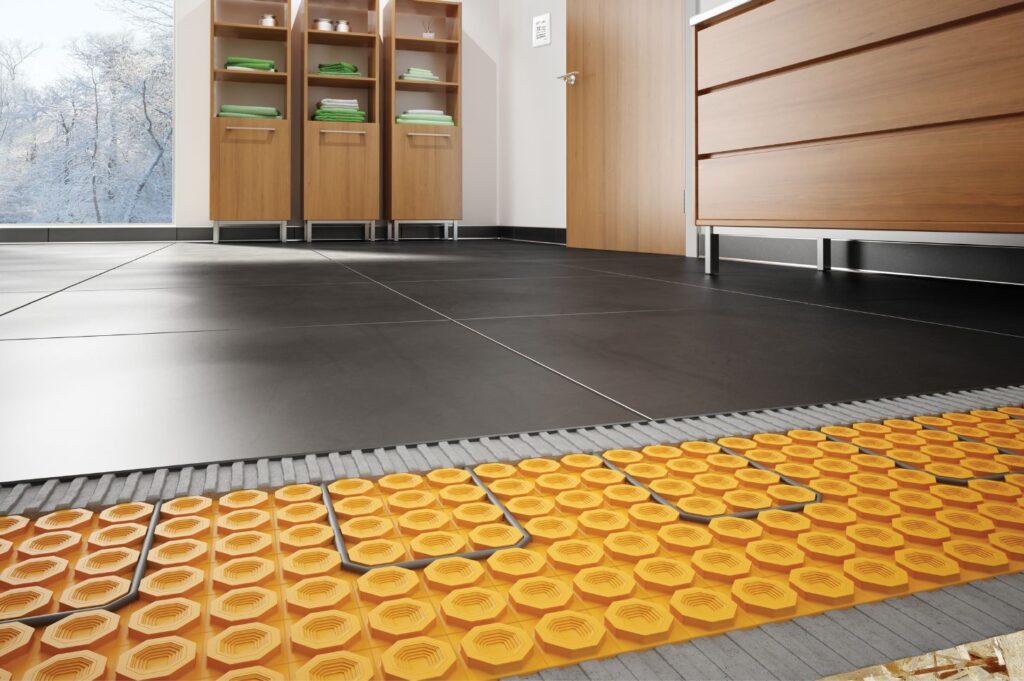Every modern homeowner has been there: leafing through a glossy design magazine or scrolling a home renovation website and being utterly entranced by the allure of radiant heated bathroom floors. There’s a certain seductive promise to them — the idea of stepping onto a warm surface during a chilly morning, the steam from your shower melding perfectly with the gentle warmth beneath your feet. But, like every home renovation dream, it’s essential to weigh the spellbinding allure against the gritty reality of costs and practicalities.
The Advantages of Heating Up Your Mornings
The primary advantage of heated bathroom floors, as any enthusiast will tell you, is comfort. For those who live in colder climates, the bite of icy tiles on a winter morning is a jarring experience, one that sends shivers up the spine and acts as an unpleasant alarm clock. By contrast, heated floors offer a cocoon of warmth, ensuring that every step you take is cushioned in gentle heat.
Beyond the visceral joy of warmth, there are other, perhaps less immediately obvious, benefits to the installation:
Energy Efficiency: Radiant floor heating can often be more energy-efficient than traditional heating methods. Since it heats the room from the ground up and offers a consistent temperature across the floor, it can reduce the need to blast your overall home heating system.
Aesthetic Boost: Say goodbye to bulky radiators or vent systems. With the heating elements tucked neatly beneath your tiles or flooring, you get an uninterrupted design flow, lending a clean and modern feel to your bathroom.
Improved Air Quality: Traditional heating systems can distribute dust and allergens around a room. With radiant floor heating, there’s less air movement, which can lead to better indoor air quality, an advantage for those with allergies.
Counting the Costs
However, as enticing as the benefits are, the decision to install heated floors is not one to be made lightly. Like the soft, enchanting glow of a siren, there are hidden challenges to consider before diving in.
Installation Costs: Radiant floor heating systems, especially hydronic systems (those that use heated water to warm floors), can be expensive to install. It’s not just about laying down heating coils or tubes; it requires careful planning, potentially a new water heater, and skilled installation. It’s a long-term investment, which means you’ll need to weigh the upfront costs against the future benefits.

Real-World Reflections: Feet First into the Radiant Revolution
The verdict on heated bathroom floors is in, and it’s as varied as the homeowners who’ve embraced this innovation. While many have found unparalleled joy in their upgraded mornings, others highlight important considerations for those pondering the warm embrace of radiant flooring.
The Delight in the Details
In the colder regions, the immediate warmth on a frosty morning often shifts from a luxury to an essential. Imagine transitioning from the discomfort of frigid tiles to the sensation of a tropical beach beneath your feet. This transformation, as experienced by many, is often likened to the difference between night and day.
Beyond just the tactile comfort, there’s a noted ambiance shift that these floors bring. Bathrooms become spa sanctuaries. The enveloping warmth elevates simple baths into luxurious soaks, and the daily routine becomes an indulgent ritual.
An added advantage, especially for homes with a mix of young, playful children and elderly members, is the safety quotient. Wet tiles can be a hazard, but the consistent warmth from heated floors aids in evaporating stray splashes, thus reducing the chance of slips.


